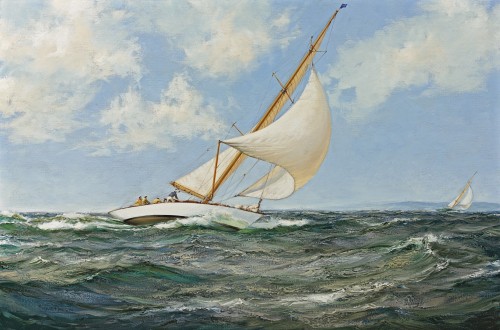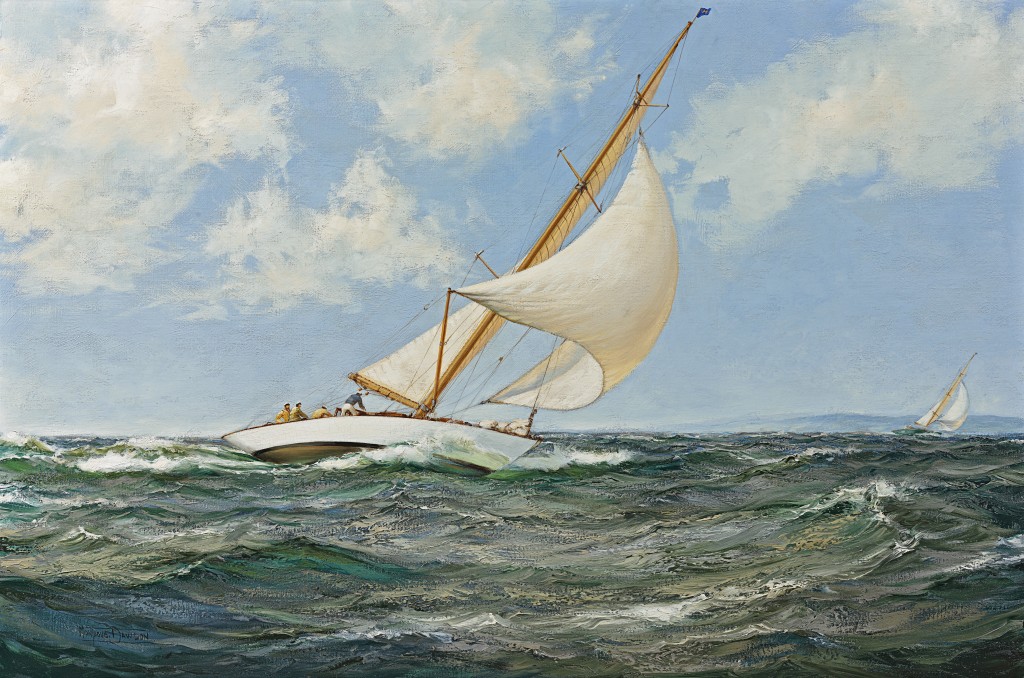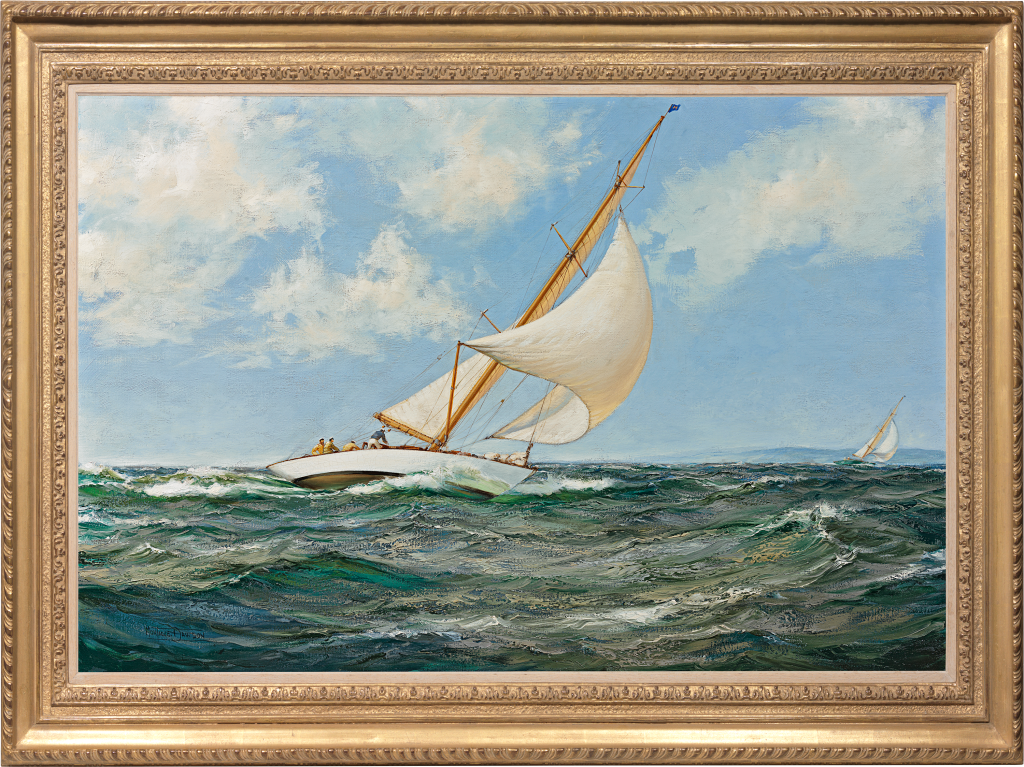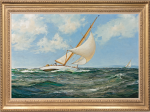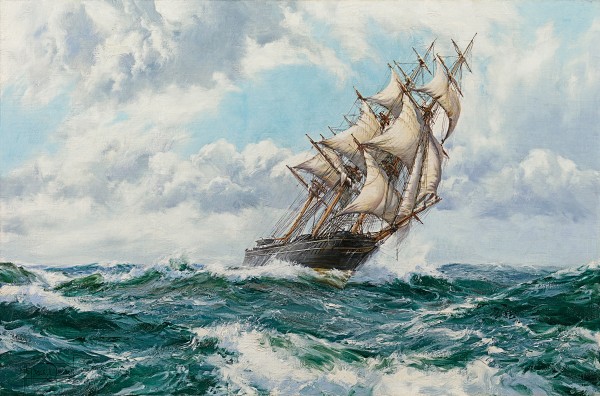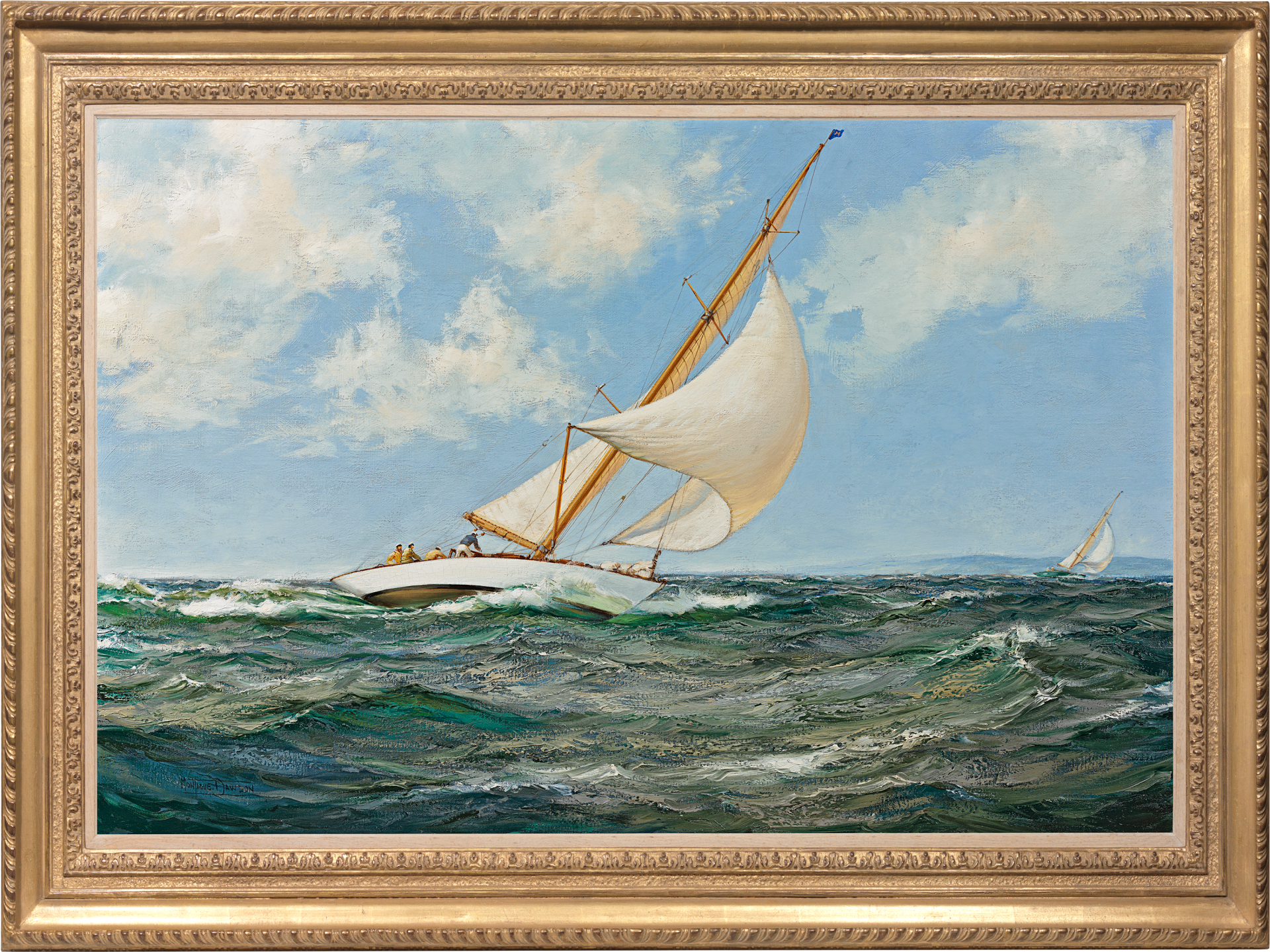MONTAGUE DAWSON
Chiswick 1895 - 1973 Midhurst, Sussex
Ref: CC 150
Taut sheets
Signed lower left: Montague Dawson; inscribed with the title on the stretcher
Oil on canvas: 28 x 42 in / 71.1 x 106.7 cm
Frame size: 35 ½ x 49 in / 90.2 x 124.5 cm
Painted circa 1950
Provenance:
Elizabeth Briggs Fisher Trust;
private collection, Michigan, USA
‘His brushwork, though free, is never careless and his colours are graded with discipline and restraint. This all contributes to the feeling of spaciousness and harmony which is the mark of a Montague Dawson seascape … He remains a force in English marine painting, as fresh and vigorous as his own crisp skies and driving seas.’[1]
This painting is a vibrant example of Montague Dawson’s interest in all kinds of marine racing. He grew up on Southampton Water and witnessed many regattas and maritime events. Dawson himself was a keen amateur yachtsman and the present work captures the grace and excitement of yacht racing.
The painting formerly belonged to Elizabeth Briggs Fisher (1907-2002), a member of celebrated dynasties of Detroit industrialists. She was the daughter of Walter O Briggs, founder of Briggs Manufacturing Co., and married Charles Fisher Jr. of Fisher Body fame. Mrs Fisher was an accomplished horsewoman and a generous philanthropist, with a special interest in education.
MONTAGUE DAWSON, RSMA, FRSA
Chiswick 1895 - 1973 Midhurst, Sussex
Montague Dawson was the son of a keen yachtsman and the grandson of the marine painter Henry Dawson (1811-1878). Much of his childhood was spent on Southampton Water where he was able to indulge his interest in the study of ships. For a brief period around 1910 Dawson worked for a commercial art studio in London, but with the outbreak of the First World War he joined the Royal Navy. Whilst serving with the Navy in Falmouth he met Charles Napier Hemy (1841-1917), who considerably influenced his work. Dawson was present at the final surrender of the German Grand Fleet and many of his illustrations depicting the event were published in the Sphere.
After the War, Dawson established himself as a professional marine artist, concentrating on historical subjects and portraits of deep-water sailing ships often in stiff breeze or on high seas. During the Second World War, he was employed as a war artist and again worked for the Sphere. Dawson exhibited regularly at the Royal Society of Marine Artists, of which he became a member, from 1946 to 1964, and occasionally at the Royal Academy between 1917 and 1936. By the 1930s he was considered one of the greatest living marine artists, whose patrons included two American Presidents, Dwight D Eisenhower and Lyndon B Johnson, as well as the British Royal Family.
The work of Dawson is represented in the National Maritime Museum, Greenwich and the Royal Naval Museum, Portsmouth.
[1] LGG Ramsey, Montague Dawson R.S.M.A., F.R.S.A., Leigh-on-Sea 1967, p.16.

